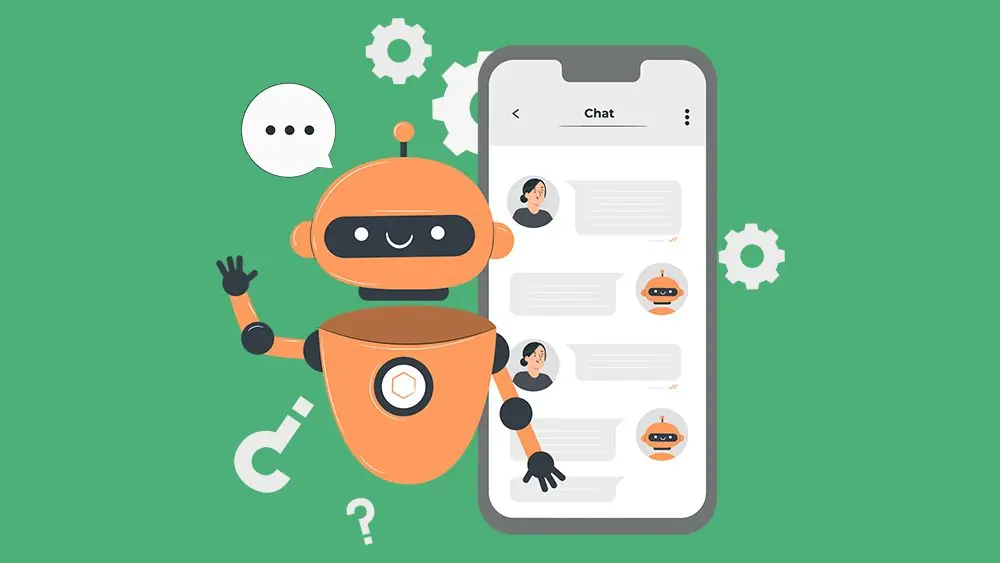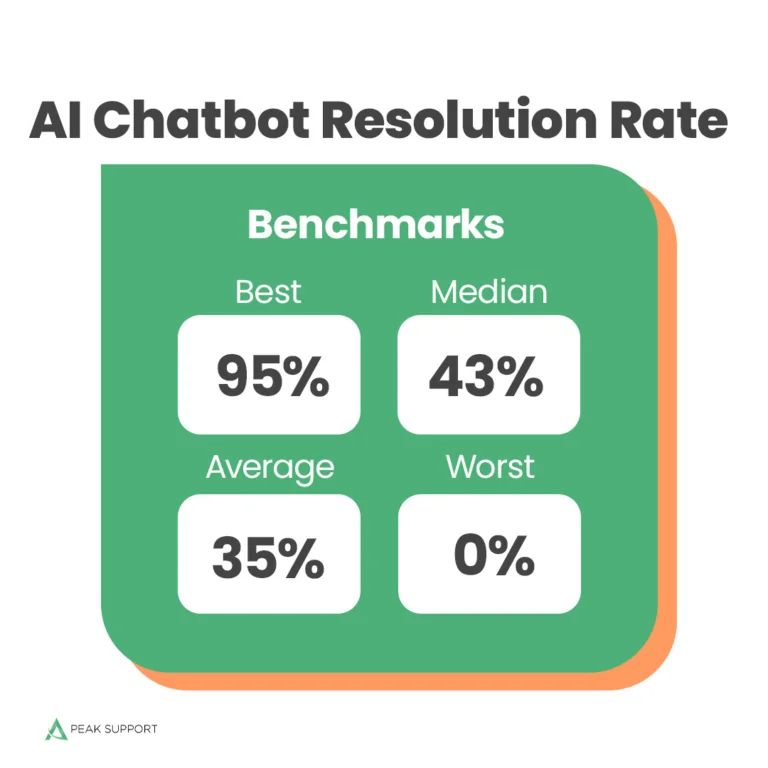2024 Key Performance Indicators for Customer Service: AI Chatbot Resolution Rate
- Peak Support

The new KPI addition – AI Chatbot Resolution Rate
Chatbots have been around for years, but they’ve been…less than great. With the arrival of conversational AI, chatbots have become less disappointing and more helpful. It’s becoming clearer to CX professionals that AI has the power to reshape customer service teams and how they effectively they operate.
AI Chatbot Resolution Rate is a new addition in our 2024 KPIs for Customer Service ebook as it is becoming an increasingly popular metric to track. A company’s chatbot is typically the first touchpoint a customer will have before a human agent steps in. So it’s critical to know just how effective a company’s chatbot is in resolving issues.
Do you already have a copy of our 2024 Key Performance Indicators for Customer Service ebook? If not, you can download it here.
But keep in mind that chatbots are not in any way replacements for human customer service agents. They’re just meant to provide immediate responses to basic inquiries when human support representatives are unavailable. And chatbots can also be used to redirect more complicated customer inquiries or concerns to human support agents who are more capable of handling them.
Benchmarks
Which category does your team fall under when it comes to the AI chatbot resolution rate benchmarks? The benchmark figures for the best, average, and worst AI chatbot resolution rate are the result of our team’s extensive research where they assessed 300 data points from more than 150 different sources.

How to improve your AI chatbot resolution rate
Update your knowledge base.
Chatbot tools are only as good as the data they’re trained on. Update your knowledge base and optimize it for AI before you implement your chatbot. It’s harder for AI to understand multi-part questions, so break out your articles so they only address one issue at a time. Also, don’t provide “yes” or “no” answers; use a full sentence to explain each answer.
Update your chatbot’s menu.
Make sure your chatbot’s menu includes enough options, and that the options align with your users’ most common questions. You should make it easy to transfer to a human agent, but you don’t have to offer that option immediately. Give the chatbot a chance before you offer a transfer.
Train your chatbot with red teaming.
Red teaming essentially means having internal users work together to attempt to break your chatbot. They’re testing its effectiveness and looking for opportunities to improve. This enables you to identify and fix issues long before your customers experience them.
Create new roles for your team.
Roles like conversation manager and AI calibration specialist are becoming vital, especially for large support teams with complex operations. Building out these roles can level up your whole team and dramatically improve the ROI of your chatbot investment.
Optimize your chatbot with help from the pros
Peak Support knows a thing or two about AI in customer service. In fact, we even helped one of our clients optimize their chatbot. The result? 96% of chatbot interactions were resolved without any human support agent intervention. And we did that while still maintaining a 97% CSAT score across all tickets. Wouldn’t it be great if your chatbot can also do the same?
Get in touch with our sales team today so we can tell you more about how Peak Support can improve your AI chatbot resolution rate and overall customer experience by enhancing your chatbot’s capabilities.
